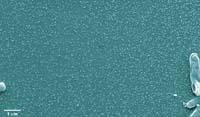Polymers, Trojan Horses for Cancer Therapy
2009/04/01 Perez Alvarez, Leire - Kimikan doktorea | Artetxe Pujana, Maite - Kimikan lizentziatua Iturria: Elhuyar aldizkaria
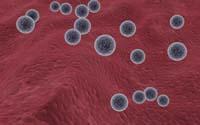
Natural and synthetic polymers. Natural polymers, such as silk, wool or cellulose, have historically been useful and important materials. However, in today's lifestyle, synthetic polymers have become an essential material, achieving unthinkable goals such as the manufacture of artificial polymer hands capable of taking an egg without breaking.
Polymer chains can be linearly, branched, or crossed. In the latter case, all chains are chemically bonded and form a huge molecule. These molecules form an elastic network that expands in three dimensions. Its structure can be compared to the sympathetic structure of the sponge found in any house.
Of these crossed polymers, hydrogels have their most attractive characteristics. Hydrogels, as indicated by hydro savings, have affinity for water. Water molecules penetrate the hydrogel, that is, they absorb water and get trapped in the net. Therefore, the hydrogel swells always maintaining its initial appearance. Hydrogels are able to store inside quantities of water a thousand times higher than their initial weight. The use of water as a diluent provides great advantages in terms of biocompatibility. The use of hydrogels as biomaterials is due to their similarity with living tissues, which are greater than any other synthetic biomaterial. Many hydrogels are also known as intelligent materials. Before an external physical or chemical excitation --light, heat, pH change or radiation - are able to change the volume, that is, just as the light is turned on and off by a switch, the hydrogels can swell or empty by changing the external agents.
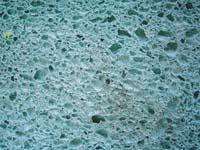
Where do we find hydrogels? We just have to look around to see that hydrogels are important in our daily lives. Why are diapers and compresses currently on the market getting thinner? It is due to the decrease in the amount of cotton and the increase in the absorption capacity of liquids. In gardening there are also many uses, as they are able to store water and fertilizers inside. Depending on the needs of the plants, these waters and fertilizers are progressively released, improving soil fertility and facilitating irrigation. One of the latest innovations in interior decoration is the replacement of the vases floor by hydrogels.
Controlled release of medicines
Hydrogels have the ability to store substances inside them and subsequently release them slowly, so in the 1950s various studies were conducted for the use of fertilizers and hydrogels releasing low molecular weight pesticides. Combining this characteristic with biocompatibility, in the 1960s they extended to the medical field in order to overcome the drawbacks of conventional drug delivery methods.
The traditional way to take medicines is repeated and monodose. In this case, high concentrations of the drug are required, which means a decrease in time and a loss of final efficacy. Then another dose is taken again. Therefore, the concentration of the drug leads at all times from the toxic limit to the ineffective limit. This conventional technology is not the most appropriate, especially in long-term treatments such as cancer chemotherapy treatment.

In this case, the only dose that allows the concentration of drugs to be between the maximum and the minimum limit at all times is adequate, that is, the controlled release of the drug. In this way, the concentration of the drug will be constant during treatment, more effective. To achieve this goal, hydrogels are ideal materials. Therefore, in the 1970s, the controlled release technology of low molecular weight drugs was developed through hydrogels. From that moment on, there have been some advances, such as the current transdermal hydrogel residues that have become reality.
The advantage of transdermal braces is that they are able to provide an accurate dose of the assets that pass into the blood. Therefore, the usual oils and ointments have been replaced to deal with eye holes, cellulite, etc. Nowadays it is very common to find these materials in pharmacy and cosmetics, since they offer better results. In recent years we are studying the possibility of using the patches in Alzheimer's therapy. This way medicines against this disease can be given.
Micro/nanogelas
Seeing the potential of Hidrogel and the current importance of nanotechnology, both avenues of research have come together. In this way, interest in the nano-sized hydrogelella is a million times smaller than a millimeter. Research on microgels --100-1000 nanometers - and nanogeles --0-100 nanometers - has intensified in recent years. These small sizes make medicine very interesting, as these small particles are able to move freely within the body. This way you can reach anywhere in the body without using surgery.
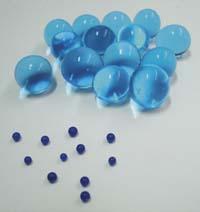
Microgels have been known in recent years, but this does not mean that they are an invention of recent years, which exist from the beginning of polymer science. XX. At the beginning of the 20th century, when polystyrene and rubber began to be marketed, they encountered small and annoying gel particles that damaged valves and tubes, tirelessly altering the properties of final products. These particles that at that time caused so many problems are currently micro/nanogelas of great use.
Over time, scientists discovered the potential of these small particles. In the 1970s it began to be part of the components of paints and varnishes, improving their properties. These small components facilitate the extension of the paint on the surface to be painted. In addition, they are more resistant and less viscous.
Because of the properties of these small particles, they have also begun to play an important role in medicine. Micro/nanogels can act as drug vehicles. Therefore, they are interesting to help overcome the limits of chemotherapy currently used against cancer.
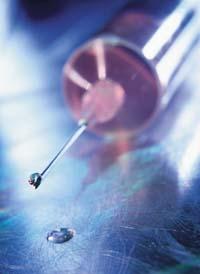
New cancer therapies
Surgery is the oldest known cancer therapy. A papyrus of 1600 BC explains the extraction of a solid tumor. Currently, in most cancer tumors, in addition to surgery, other treatments are performed such as radiation therapy, chemotherapy, and hormonal therapy or immunotherapy.
Chemotherapy, a therapy based on the administration of drugs that kill cancer cells, has a hopeful future. Today, fortunately, many effective drugs are known to fight cancer, but their effectiveness is conditioned by the usual administrative methods. They are aggressive treatments since large amounts of drugs are needed to fight the disease. They also kill healthy cancer cells with side effects. Therefore, it is common for people suffering from chemotherapy to appear in the short term vomiting, hair loss, infections, diarrhea, fatigue... Long-term infertility, heart weakness, early menopause, or a second cancer may appear.
It has been observed that some drugs used in chemotherapy are valid for the death of cancer cells. The drawbacks of chemotherapy can be overcome by selective drug administration, where researchers' imagination appears. Micro/nanogelas can be tools to achieve this selectivity. In this way, a limited local release can be achieved without causing any damage to healthy tissue.
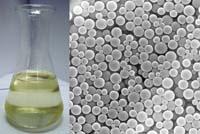
Micro/nanogeles can be vehicles of the drug, since inside you can introduce the drug. In addition, these gels can be chemically prepared to reach the tumor directly, without letting go of the active substance they contain.
Folic acid - a natural vitamin - can be used to direct rooms to cancer cells. Cancer cells have a special affinity for folic. Studies of recent years have shown that folic acid receptors are abundant in different types of cancer, but limited in healthy tissues. It can be said that these cells need large amounts of this vitamin to be able to grow quickly. Therefore, if the micro/nanogel is surrounded by folic acid, the room appears disguised in front of the cancer cell. In this way it is possible to deceive the tumor and avoid the immune response in its defense. In this way, the hydrogel that carries the drug is integrated into the cancer cell. Surrounding the micro/nanogel with folic acid has a kind of special permission to introduce it into the tumor. This fact can be compared to the famous event of the Trojan Horse. In both cases, through the costume you get into the house of the enemy and destroy the enemy inside.
The possibilities that hydrogels can bring in the fight against cancer do not end here. Various measures have revealed that the pH (5.5) found in folic acid coated materials within the cancer cell differs from healthy tissues (7.4). From the results of these studies can be designed special pH-sensitive microgels that would swell into a specific pH and release the drug. In cancer therapy, the goal is to design hydrogels that inflate with an approximate pH of 5.5.
Therefore, micro/nanogelas can be another step in the fight against cancer. As mentioned above, hydrogels have a tangled structure. This allows the internal storage of the drug and its subsequent controlled release. On the other hand, its nanometric size allows it to move easily through the organism. In addition, the micro/nanogel will be designed to meet two special requirements. On the one hand, target only cancer cells, surrounding them with folic acid, and on the other, inflate them only when pH is 5.5, to release the drug only at this pH. In this way, the drug can be released selectively and controlled. Here we have one of the skills that new research offers us to overcome cancer, the old disease. As can be seen, several scientific fields --medicine, pharmacology, chemistry...- converge on the way forward.
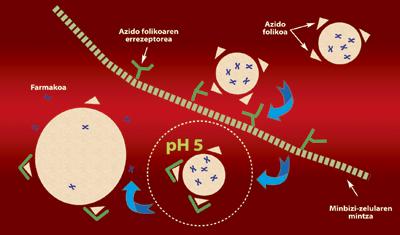
Thanks to the University of the Basque Country for collaborating in this project.

Gai honi buruzko eduki gehiago
Elhuyarrek garatutako teknologia




